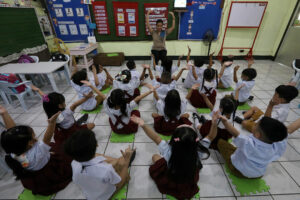THE GOVERNMENT must improve access to education and healthcare and invite more private sector participation in human capital investment to bring the Philippine poverty rate down to the single digits by 2028, the World Bank (WB) said.
“The country still faces challenges to ensure that the gains from robust economic growth are distributed evenly,” the bank reported in its Philippine Economic Update.
“Ensuring that the gains from long-term growth are sustained and distributed more evenly requires addressing gaps in connectivity (both digital and physical), access to basic services such as in health and education, and private sector participation,” the WB said.
The government of President Ferdinand R. Marcos, Jr. is hoping to cut the poverty rate to single-digit levels, to about 8% by the end of his term in 2028. This would be the equivalent to bringing nearly 14 million people out of poverty.
To reduce poverty, Rizal Commercial Banking Corp. Chief Economist Michael L. Ricafort cited the need to boost productivity in agriculture, which accounts for nearly a quarter of the workforce.
“Increased mechanization, use of higher-yielding and resilient seed, use of the best global technology, more irrigation, cold storage, and other infrastructure to increase farmers’ incomes would help pull more people out of poverty,” he said via chat.
The Philippine Statistics Authority reported last year that farmers and fisherfolk were the poorest segments of society in 2021, with poverty rates of 30% and 30.6%, respectively.
Foreign direct investment could upgrade labor-heavy sectors like manufacturing and industries with foreign technology, Mr. Ricafort added.
He also cited education as the “best equalizer that helps/lifts more people from poverty.”
A Social Weather Stations conducted in March showed that nearly half (46%) of Filipinos considered themselves poor. — Beatriz Marie D. Cruz
